August 3, 2025
Your First Look at the Galápagos Islands and What Makes Each Unique
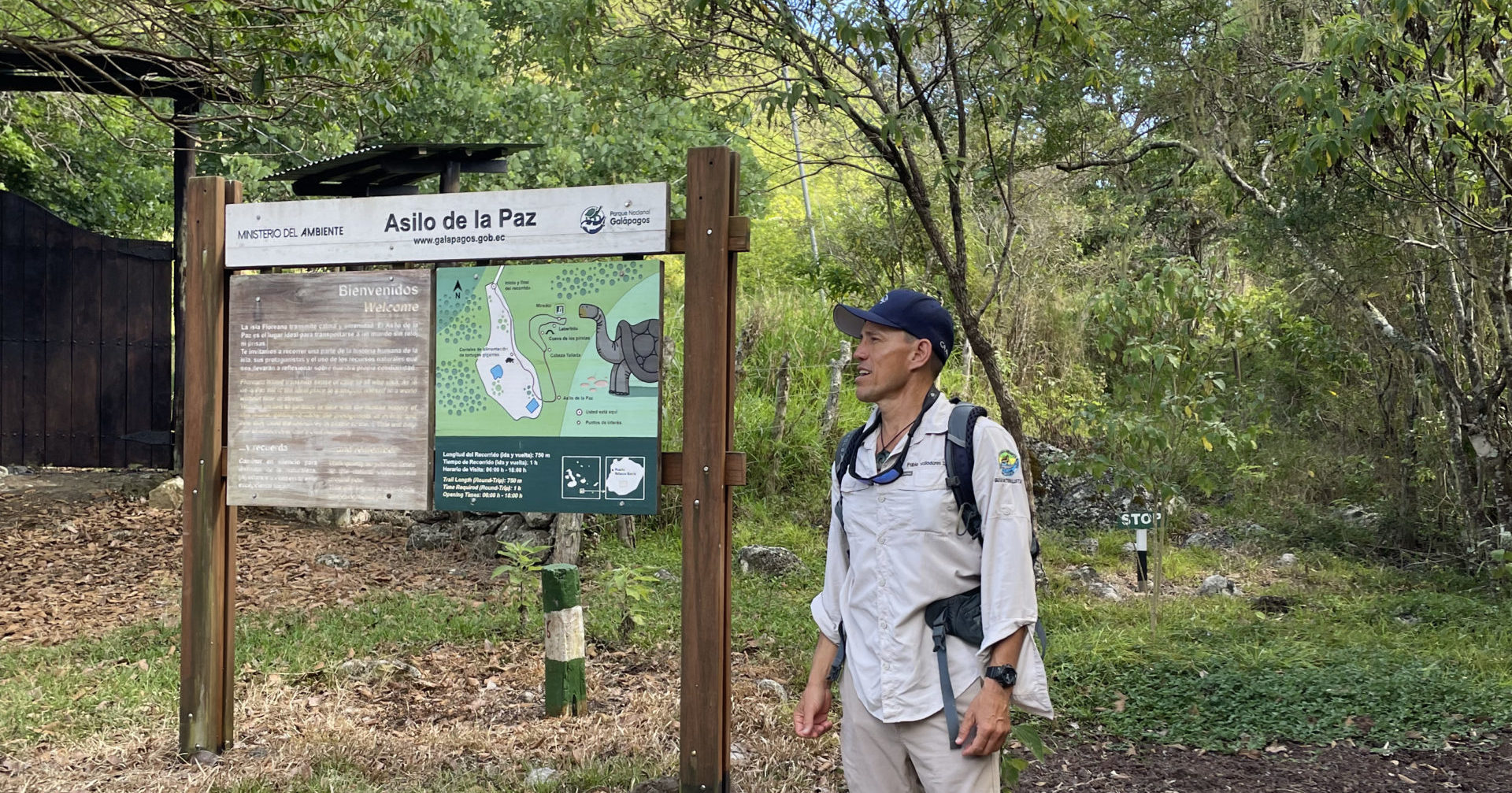
Planning a Galápagos adventure is about more than choosing dates and booking a flight, it’s about understanding the islands and choosing the experiences that will make your trip unforgettable.
Each island in the Galápagos has its own personality, from lava-sculpted coastlines to sleepy fishing towns and wild volcanic craters. The more you know before you go, the more meaningful your experience here will be.
As a local operator based in the Galápagos, we specialize in land-based tours that take you deeper into each island’s unique character. This guide will help you get familiar with the key inhabited and uninhabited islands, and how to decide the best ones for your adventure.

Where Are the Galápagos Islands?
About 1,000 km (600 miles) off the coast of Ecuador, the Galápagos archipelago is made up of 13 main islands, 6 smaller ones, and over 100 islets and rocks. Known as a living laboratory of evolution, this is the only place on Earth where you’ll find creatures like marine iguanas, giant tortoises, and blue-footed boobies thriving in their natural habitat; many of them totally unafraid of humans.
The Four Inhabited Islands: Where You Can Stay
Most travelers stay on two or more of the four inhabited islands. Each offers a unique atmosphere, different wildlife, and activities that shape your experience.
Although all islands in the Galápagos are filled with both marine and land wildlife, here we’ll highlight some of the most iconic species you can spot on each.
San Cristóbal
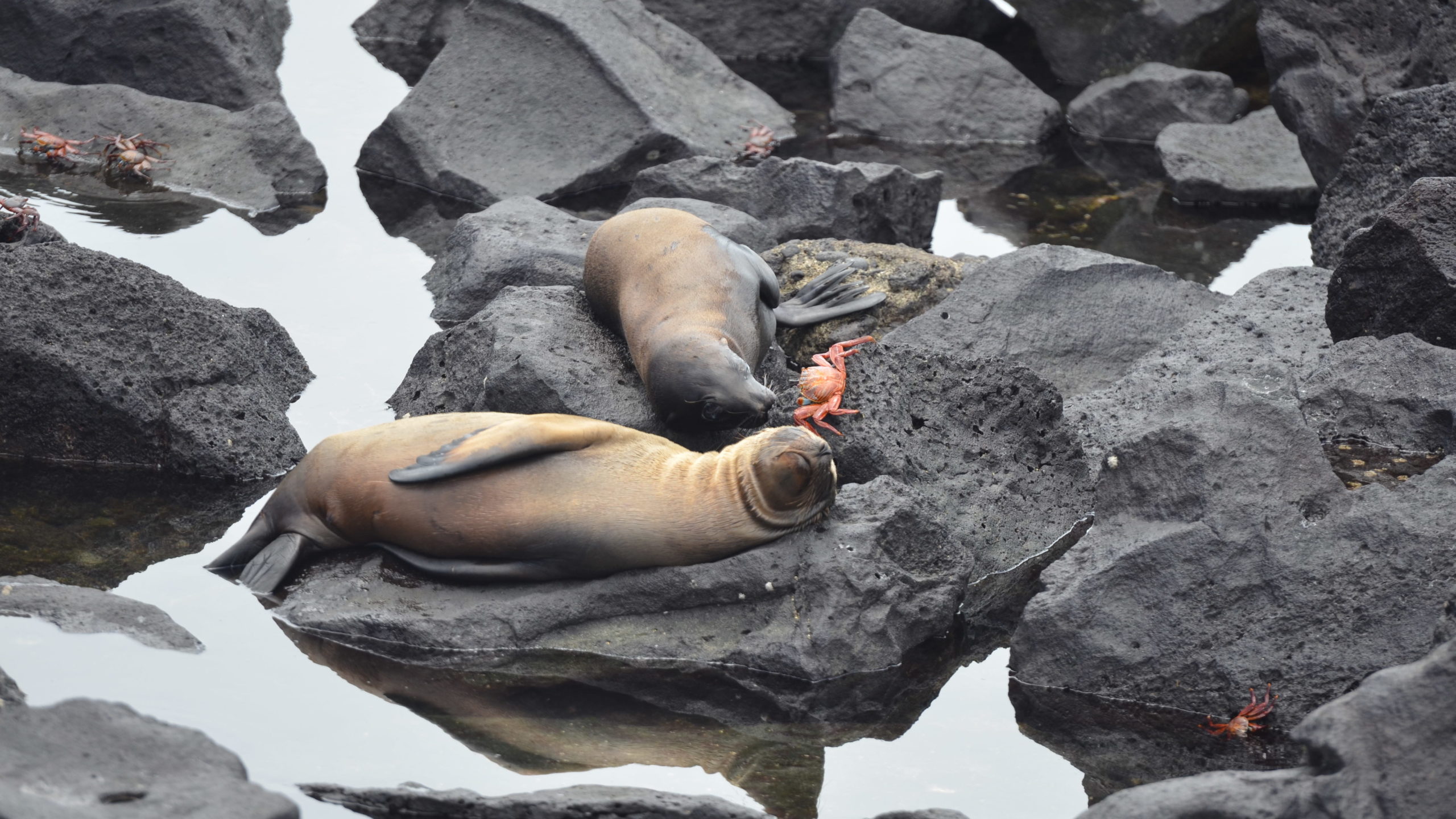
Sea lions, surf, and local charm
This island is often the first stop for travelers flying into the Galápagos, and it’s a fantastic place to begin. San Cristóbal offers a walkable waterfront town (Puerto Baquerizo Moreno), laid-back vibes, and plenty of wildlife right on your doorstep. It’s also known as the “sea lion capital” for good reason.
Highlights:
- Snorkeling or diving at Kicker Rock, one of the archipelago’s top marine sites
- Watching sea lions and marine iguanas at La Lobería and Playa Mann
- Walking the scenic trail to Cerro Tijeretas
- Visiting the Galápagos Interpretation Center to learn the islands’ human and ecological history
Wildlife: Sea lions (everywhere!), blue-footed boobies, frigate birds, Sea turtles & Sharks as well as many more species that can be seen during your stay.
Best for: Wildlife lovers, ocean enthusiasts, and first-time visitors looking for a relaxed, local experience.
Santa Cruz
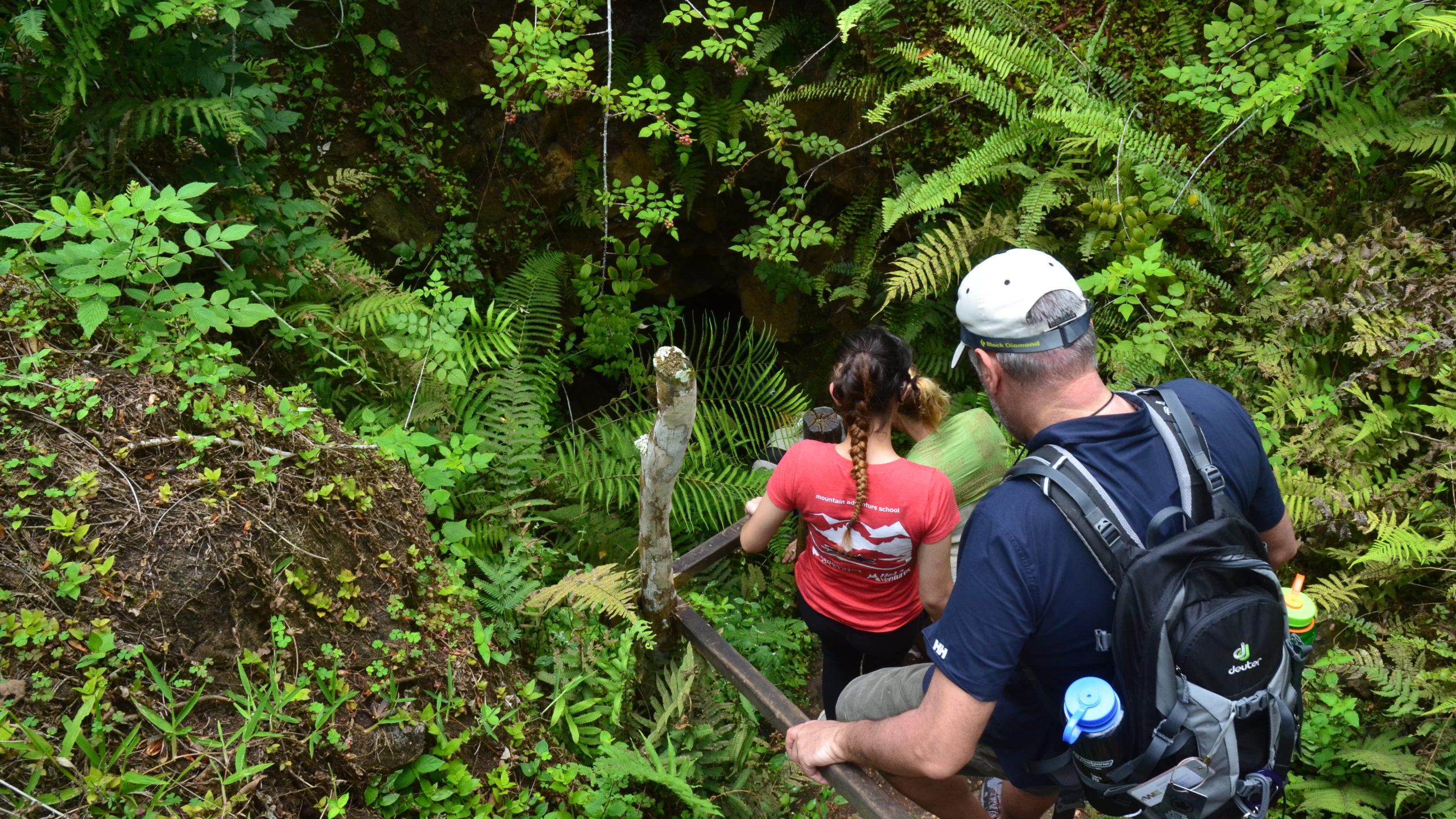
The bustling hub and a springboard for exploration
Santa Cruz is the most developed island, with Puerto Ayora being the largest town in the Galápagos. It’s a great base for combining comfort, convenience, and incredible wildlife encounters, especially if you’re interested in day tours to uninhabited islands.
Highlights:
- Walking with giant tortoises in the highlands
- Exploring lava tunnels and Los Gemelos craters
- Relaxing at Tortuga Bay, one of the most beautiful beaches in the islands
- Visiting the Charles Darwin Research Station and the tortoise breeding center
- Day tours to Bartolomé, North Seymour, or Santa Fe
Wildlife: Giant tortoises, marine iguanas, pelicans, Darwin’s finches among others.
Best for: Anyone wanting a balance of nature and comfort.
Isabela
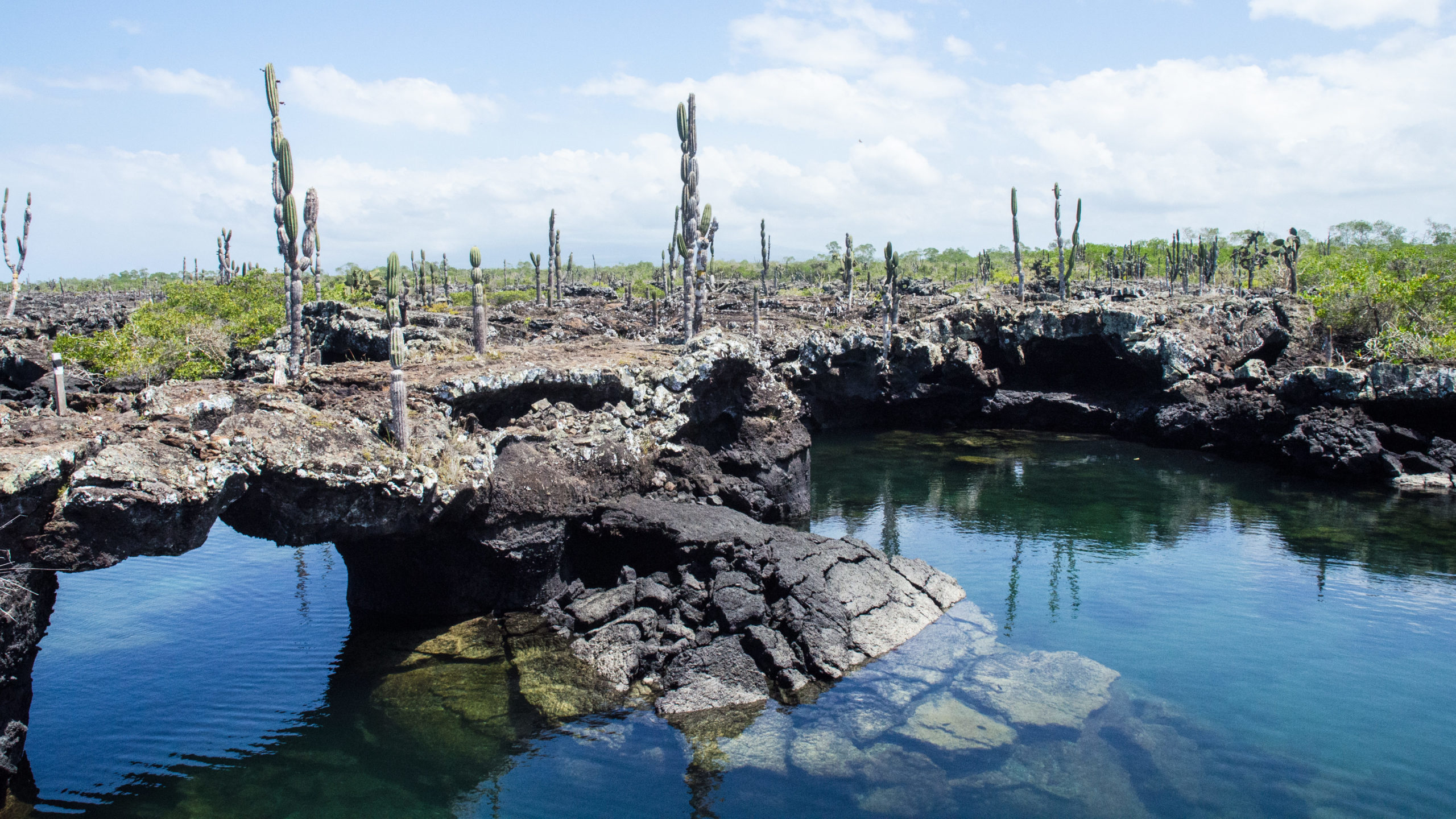
Raw nature, volcanic landscapes, and penguins
Shaped like a seahorse and made up of six volcanoes (five still active), Isabela is the largest island in the Galápagos, and one of the most dramatic. Life in the sleepy beach town of Puerto Villamil is peaceful and rustic, offering a chance to fully connect with nature.
Highlights:
- Snorkeling in Los Tuneles, a network of lava arches teeming with marine life
- Hiking to the rim of Sierra Negra Volcano, one of the world’s largest volcanic craters
- Kayaking with penguins and rays in the sheltered bay
- Visiting the Giant Tortoise Breeding Center
- Walking through wetlands and flamingo lagoons
- Enjoying the long sandy beaches, perfect for relaxing or spotting marine iguanas
Wildlife: Galápagos penguins, marine iguanas, giant tortoises, flamingos, turtles, reef sharks, and more, the islands are home to an abundance of marine and birdlife.
Best for: Active travelers, photographers, nature lovers, and families who want space to explore.
Floreana
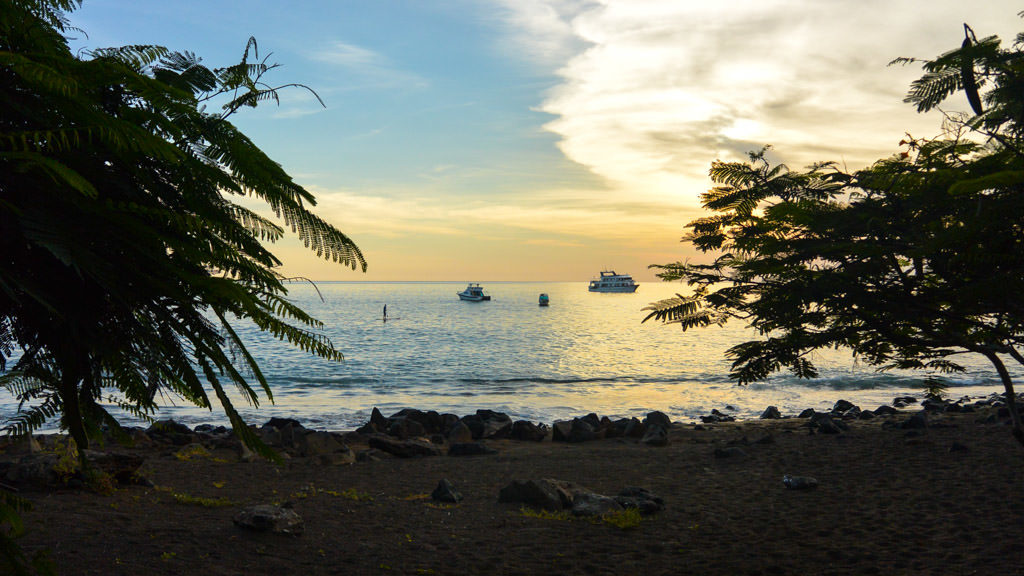
Quiet, quirky, and full of history
Floreana is the least visited inhabited island, home to only a few hundred residents. It offers true disconnection and a glimpse into the past. With stories of pirates, mysterious disappearances, and early settlers, this island combines raw nature with a fascinating human history.
Highlights:
- Visiting Post Office Bay, where you can leave a postcard using a 200-year-old sailor tradition
- Exploring the island’s highlands and caves once used by whalers and pirates
- Swimming and relaxing at Black Sand Beach
Wildlife: Colorful Marine Iguanas, sea turtles
Best for: Slow travelers, history enthusiasts, and those seeking a remote, meaningful escape
Day Trips to Uninhabited Islands
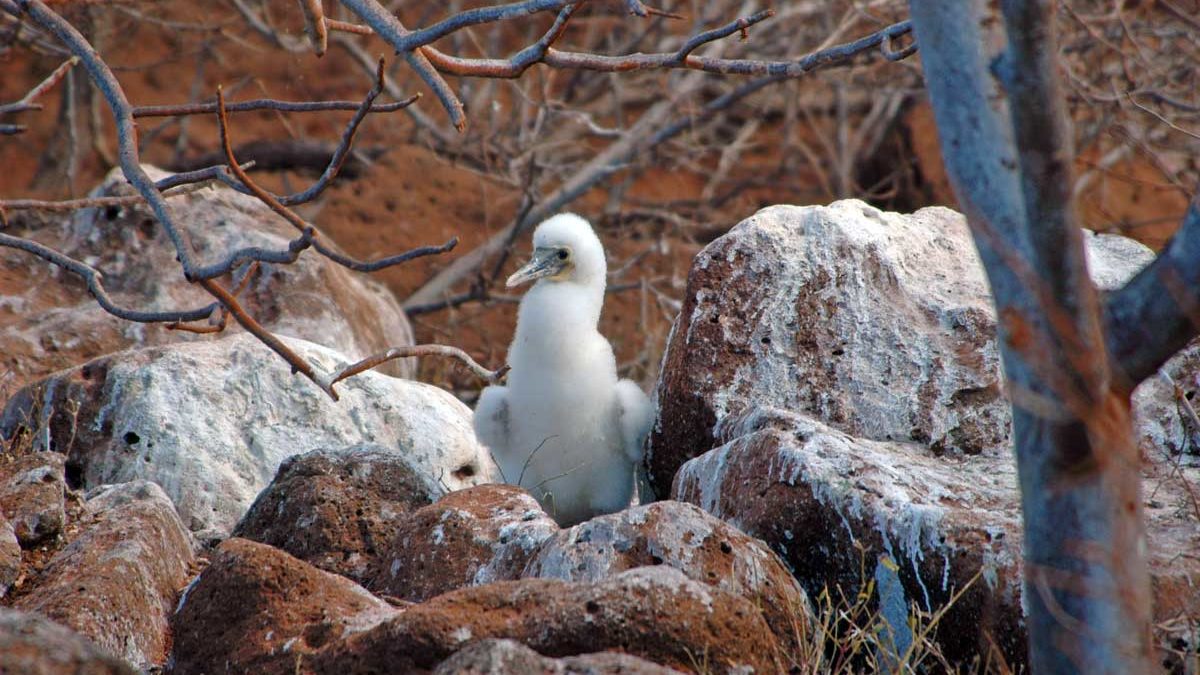
While the inhabited islands offer a wide range of wildlife experiences right outside your hotel, day tours to uninhabited islands allow you to explore even more of the archipelago’s natural diversity.
Here are some guest favorites:
Bartolomé
Dramatic scenery, and tranquil shores
If you’re after postcard-perfect views and a little adventure, Bartolomé is a must.
Key Activities:
- Famous for its lunar landscapes and the iconic Pinnacle Rock
- Begin with a guided hike up a wooden staircase, a short but steep climb of about 370 steps, to reach the summit for panoramic views of volcanic cones, surrounding islands, and Pinnacle Rock
- After the hike, snorkeling is done from the beach or panga (small boat) around Pinnacle Rock, where you may swim with Galápagos penguins, reef sharks, sea turtles, and colorful reef fish
Travel time: Approximately 2 to 2.5 hours by boat each way
Best for: Landscape lovers and snorkelers
North Seymour
Birdwatcher’s paradise
This small but mighty island is perfect for spotting some of the archipelago’s most iconic species up close.
Key Activities:
- A favorite for birdwatching and land wildlife photography
- The tour begins with a dry landing and a guided loop trail across flat, rocky terrain through arid vegetation, where you’ll see blue-footed boobies, frigatebirds, land iguanas, and playful sea lions
- After the walk, the tour includes a snorkeling session at Bachas Beach on nearby Santa Cruz Island, where you may spot reef fish, sea turtles, and rays in the shallow waters
Travel time: Approximately 1 to 1.5 hours by boat each way
Best for: Birdwatchers and families
Española
A living testament to nature’s cycle
One of the oldest islands, Española is the exclusive nesting site of the waved albatross (April to December) and home to some of the most vibrant marine iguanas you’ll ever see.
Key Activities:
- Start with a guided coastal hike at Punta Suárez, where you’ll encounter marine iguanas, Nazca boobies, lava lizards, and dramatic blowholes along the rugged shoreline
- After the hike, the tour typically includes snorkeling at Gardner Bay or Gardner Islet, where you can swim with sea lions, reef fish, and occasional turtles or rays
Travel time: Approximately 2 to 2.5 hours by boat each way from San Cristóbal
Best for: Evolution enthusiasts and wildlife photographers
Santa Fe
A world untouched by time, surrounded by turquoise waters
Remote and rugged, Santa Fe feels like stepping into another world.
Key Activities:
- A beautiful horseshoe-shaped bay perfect for snorkeling with sea lions and rays
- Start with a guided trail through a unique Opuntia cactus forest with panoramic coastal views and a chance to spot the endemic Santa Fe land iguana
- Follow this with snorkeling in the protected bay, where you’re likely to see sea lions, rays, tropical fish, and sometimes white-tipped reef sharks
Travel time: Approximately 1.5 to 2 hours by boat each way
Best for: Active adventurers and those wanting close-up sea lion encounters and scenic hikes
Best Way to Visit
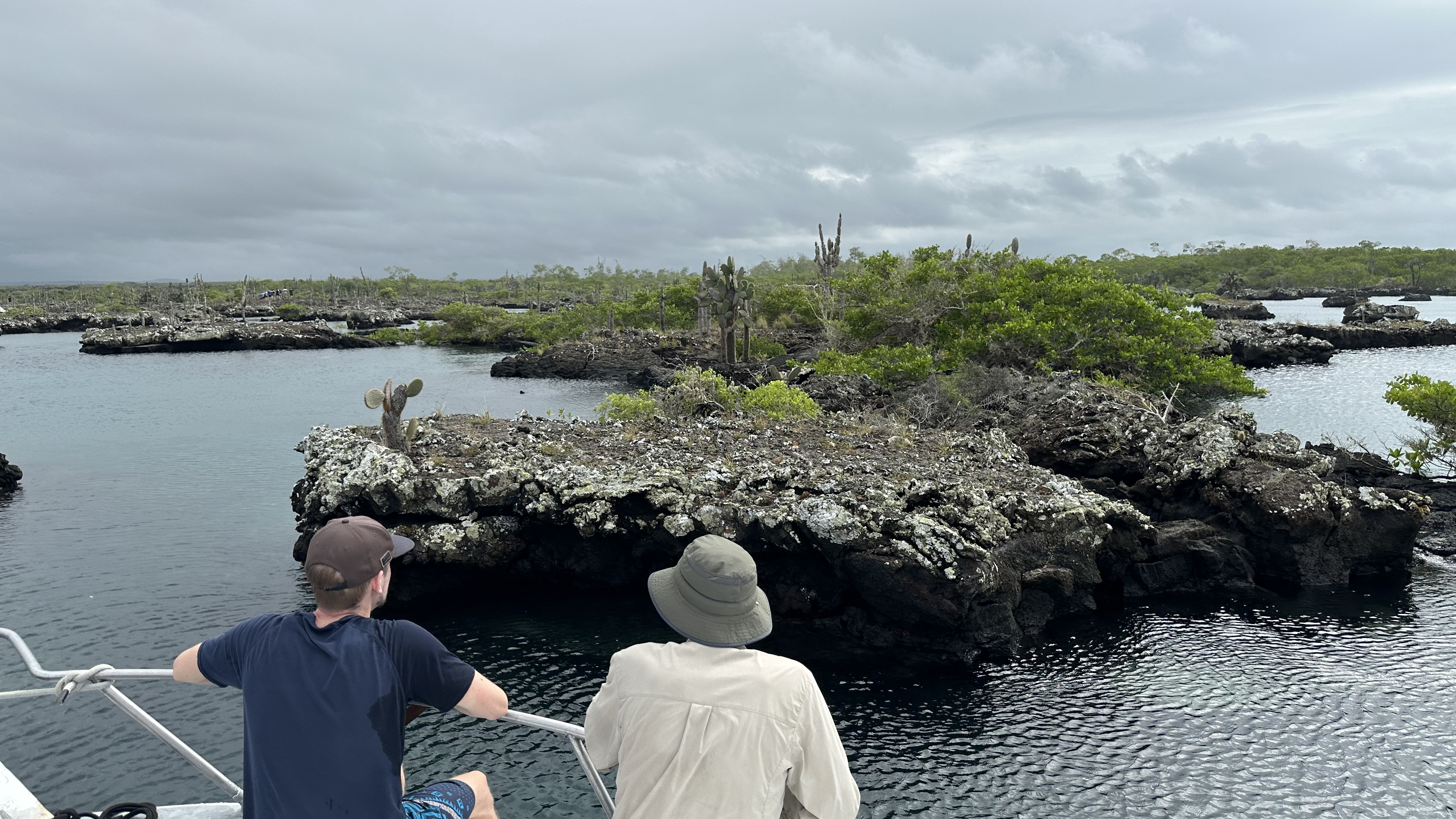
The Galápagos isn’t just about where you go, it’s about how you experience it. The best way to make the most of your trip is by combining land and water adventures in your tour. This means pairing land activities like hiking across lava fields, biking through the highlands, or exploring local villages, with marine activities such as snorkeling, kayaking, or stand-up paddleboarding. This balance allows you to fully appreciate the diversity and beauty of the islands.
If you’re looking for flexibility, cultural immersion, and the chance to explore real island life, land-based tours are a great choice. You’ll stay in comfortable hotels, take day trips to nearby islands, and have plenty of time to relax, take walks on the beach to see sea lions.
At Galakiwi, we’ve been creating awesome, authentic experiences for over 15 years, helping travelers connect with the wildlife and local communities of the Galápagos. Learn more about our approach here.
Want to dive even deeper into the wonders of the Galápagos? Check out Britannica’s full entry on the Galápagos Islands for detailed history, fun facts, and interactive games to quiz yourself on everything you’ve learned.
Ready to start planning? See our Galápagos Land-Based Tours.
